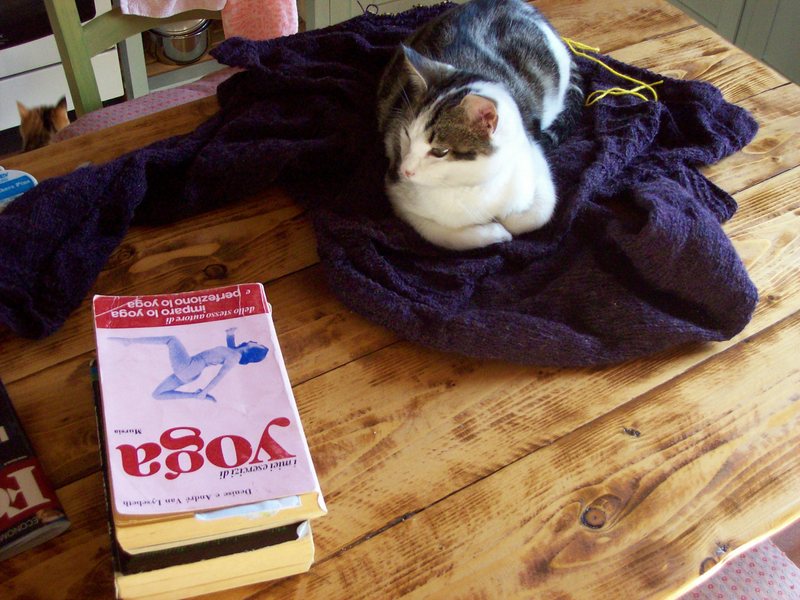Italian Indirect Personal Pronouns Posted by Geoff on Apr 23, 2018 in Grammar
Pronomi personali indiretti are really not as complicated as they sound once you’ve understood the basics of how they work.
To Whom?
Put simply, indirect personal pronouns answer the question ‘to whom?’ (a chi?)
For example: a chi hai dato il libro? = to whom did you give the book? ho dato il libro a lui = I gave the book to him. Hence a lui is the indirect personal pronoun in this sentence.
Here are some more examples:
a me = to me: Paolo ha dato il libro a me = Paolo gave the book to me
a te = to you: volevo dare questa foto a te = I wanted to give this photo to you
a lui = to him: puoi passare il sale a lui? = can you pass the salt to him?
a lei = to her: Olivia ha telefonato a lei = Olivia phoned (to*) her
a noi = to us: lo hanno spiegato a noi = they explained it to us
a voi = to you (plural): quando sarà pronto mandiamo una mail a voi = when it’s ready we’ll send an e-mail to you (plural)
a loro = to them: abbiamo dato un passaggio a loro = we gave (to*) them a lift
*Important Note: In Italian we often use a (to) where it wouldn’t be used in English, e.g. telefonare a qualcuno = phone someone, dire a qualcuno = tell someone, dare un passaggio a qualcuno = give someone a lift.
The above forms are known as forme toniche and are generally used to emphasise the receiver of the action. So the statement Paolo ha dato il libro a me = emphasises the fact that Paolo gave the book to me and not to someone else.
Now let’s look at the more compact forme atone. Here they are alongside their corresponding forme toniche:
|
Forme toniche |
Forme atone |
Translation |
|
a me |
mi |
to me |
|
a te |
ti |
to you (singular) |
|
a lui |
gli |
to him |
|
a lei |
le |
to her |
|
a noi |
ci |
to us |
|
a voi |
vi |
to you (plural) |
|
a loro |
gli |
to them |
Let’s finish off with some examples of how we use the forme atone of the indirect object pronouns:
mi = to me: Paolo mi ha dato il libro = Paolo gave me the book
ti = to you: volevo darti questa foto = I wanted to give you this photo
gli = to him: gli puoi passare il sale? = can you pass him the salt?
le = to her: Olivia le ha telefonato = Olivia phoned her
ci = to us: ce l’hanno spiegato = they explained it to us
vi = to you (plural): quando sarà pronto vi mandiamo una mail = when it’s ready we’ll send you an e-mail (plural)
gli = to them: gli abbiamo dato un passaggio = we gave them a lift
As you can see from the above examples, the forme atone are slightly more complicated due to the way that they combine themselves with verbs (darti), or modify themselves in order to flow better (ce l’hanno spiegato and not ci l’hanno spiegato, which sounds wrong and is awkward to pronounce). I’ll be exploring this aspect of pronomi personali indiretti in my next blog.
A presto!

Build vocabulary, practice pronunciation, and more with Transparent Language Online. Available anytime, anywhere, on any device.





Comments:
Alicia:
Great post. Simple and clear. Looking forward to the rest.
Kimberly Koehler:
We love your grammar posts. You make sense of it all!
Mark Webber:
Very clear and helpful! Thank you.
Bonnie Melielo:
Paolo ha dato il libro a me.
Paolo mi ha dato il libro.
Yes! Thank you!!
Joseph T. Madawela:
thank you! these grammar posts are fantastic. I am doing clitics and it us a bit confusing
Raffaella:
So very helpful and really appreciate this blog!
Bonnie Melielo:
Un’altra domanda per favore. Why does the “ci” become “ce” in “Ce l’hanno spiegato.” ?
Mike Nicolucci:
@Bonnie Melielo I have the same question.
Geoff:
@Bonnie Melielo Ciao Bonnie, come ho scritto nel articolo:
“… modify themselves in order to flow better (ce l’hanno spiegato and not ci l’hanno spiegato, which sounds wrong and is awkward to pronounce)”.
That’s all there is to it: ce sounds and flows better that ci.
A presto 🙂
Dmitry:
@Bonnie Melielo When two pronouns are used together, the first changes from “-i” to “-e”: Mi dai – me lo dai
Same with particles: Ci sono – ce ne sono molti
Maria:
It would be great if there were exercises to practice what is learnt.
Buona giornata
Geoff:
@Maria Va bene Maria, sarà fatto!
🙂
Nini Rukmini:
quante cose che abbiamo imparato da Geoff, thanks a lot
Kenny:
MI hai fatto capire bene questo argomento. Grazie mile.
Geoff:
@Kenny Prego! 🙂